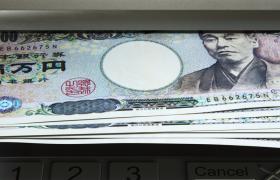Quick Contact

25th May 2017
Have you ever tried to use your New Zealand credit card to pay for a transaction overseas, and been given the choice to pay in New Zealand dollars instead of local currency? Or maybe you've noticed when shopping on an international website that the prices were displayed in NZD rather than in the local currency?
When this happens, the merchant you’re buying from is using something called Dynamic Currency Conversion (DCC). It might sound complicated, but this is essentially just a service that allows customers to pay in their home currency instead of foreign currency.
But what exactly is DCC, and how does it work? Thankfully you don’t need to be an economics whiz to understand it. We can explain the ins and outs and the pros and cons of DCC, so you won’t have to freak out the next time you’re given different payment options.
What is Dynamic Currency Conversion?
Dynamic Currency Conversion (DCC) is a financial service in which credit card holders, when making a payment in a foreign currency, can have the cost of the transaction converted to their home currency. This service is provided by third party operators, and not by the actual card issuer. That’s all there is to it really.
Except… exchange rates have shrouded DCC in controversy, with strong opinions both for and against how much it really benefits customers. To put your mind at ease, let’s look at the advantages and disadvantages.
Advantages of Dynamic Currency Conversion
Those in favour of offering customers DCC often point to the following benefits:
If you opt to pay in your home currency, you lock in the exchange rate offered by the merchant at the time of the transaction. This means you know exactly how much you’re being charged in your own currency. Exchange rates offered by card issuers only apply on the day the transaction is processed, and not on the day of the purchase – during this time, the rate could potentially change.
Supporters of DCC believe this makes it easier for customers to understand prices in their home currency so they can better manage their travel budget – they see the final amount at the time of payment, rather than getting a nasty shock weeks later when reading their bank statement.
Disadvantages of Dynamic Currency Conversion
The main objection to DCC is how it affects the exchange rates – and fees – that apply to the card holder's transaction.
While the final exchange rate is disclosed to the customer at the point of sale, the margin percentage included in this rate isn’t disclosed. This margin is set by the merchant, their financial institution, or the service provider. So it can change from merchant to merchant. It’s a bit secretive, is all we’re saying.
Critics of the DCC service believe that:
- Customers don’t fully understand the margin that’s applied and who benefits from it
- Customers are not fully aware of the fees that apply to their transaction
- Customers are not aware that DCC can be applied to online transactions, ATM withdrawals and at a retail point of sale, so they may get caught out on different types of transactions.
The costs and fees associated with DCC and foreign transactions can be complicated, so we've tried to break it down for you as simply as possible:
Scenario #1 - Not Using Dynamic Currency Conversion
As the customer, you choose to pay in the local currency instead of your home currency. So, the transaction amount is converted into NZD by your card issuer using their exchange rate.
The card issuer uses the exchange rate available on the date of the transaction. This means the rate can change from the time you made the purchase.
This NZDamount then has a foreign transaction fee applied to it by the bank itself – usually around 3% of the transaction value in NZD. This fee is charged by the bank when they have to process an international transaction.
Still with us? Good, because that’s the end of scenario number #1.
Scenario #2 - Using Dynamic Currency Conversion
As the customer, you opt to use the DCC service to pay in NZDat the point of sale. Your transaction is converted by the merchant, using the exchange rate they’ve set with their financial institution. This means you’re aware of the exchange rate you’re being charged at the time of purchase, so you know the final amount you’ll pay in NZD.
But, because the exchange rate applied has a margin worked into it, to benefit the merchant and the service provider, the final NZDamount charged to your account tends to be higher than if you had opted for scenario #1.
This is the biggest pitfall of DCC.
Most customers believe that because they converted their transaction into NZD at the time of purchase, they won't have to pay the bank's foreign transaction fee because they aren't paying in a foreign currency.
Unfortunately this isn’t always the case.
"A Foreign Transaction Fee is payable as a percentage of the New Zealand dollar value of any Foreign Transaction." - Westpac*
This is a direct quote from Westpac's website. It doesn't say the fee will only apply to "purchases in a foreign currency". The fee applies to any foreign transaction, regardless of the currency being charged at the point of sale.
So there you have it – DCC can save customers money, but only in certain circumstances.
Am I Paying More With Dynamic Currency Conversion?
A direct comparison of DCC vs. non-DCC payments isn't really possible, because the margin applied to the DCC exchange rate is set by the financial institution processing the charge, and can vary from merchant to merchant. Exchange rates also vary by card issuer, and fees vary by bank. As if things weren’t already confusing enough.
In some instances, the DCC exchange rate may be favourable to the customer. In others, the margin applied could be so high that it could make the exchange rate worse than the one charged by the card issuer directly. By opting to use the Dynamic Currency Conversion service, you’re essentially paying for the convenience of not having to do your own math to work out the final NZD transaction amount.
Some people are all for paying for convenience. But if you're not one of those people, then going forward you may want to politely say "thanks but no thanks" when given the option to pay in your home currency.
This blog is provided for information only and does not take into consideration your objectives, financial situation or needs. You should consider whether the information and suggestions contained in any blog entry are appropriate for you, having regard to your own objectives, financial situation and needs. While we take reasonable care in providing the blog, we give no warranties or representations that it is complete or accurate, or is appropriate for you. We are not liable for any loss caused, whether due to negligence or otherwise, arising from use of, or reliance on, the information and/or suggestions contained in this blog.












